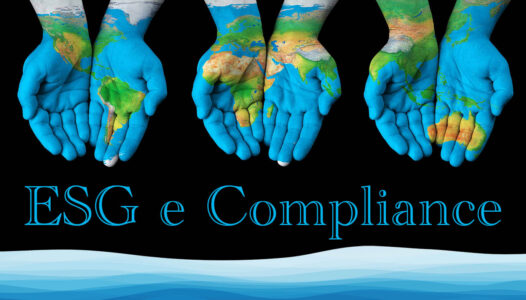Risk dashboards novelties: ESG ratings of (some) insurers at a medium level
Since years, EIOPA’s quarterly risk dashboard evaluates the different risks of the insurance sector: credit risk, market risk, underwriting risk,…These dashboards, EIOPA writes, are based on financial stability and prudential reporting data (i.e. Solvency II quarterly (QRS) and annual reporting data (ARS)). According to the most recent dashboard, these are collected from 95 insurance groups and 2190 solo insurance undertakings. Recently, EIOPA added two new risk categories to its dashboard: ESG related risks (October 2021) and Digitalisation and cyber risks (January 2022). Given that the EU’s framework to evaluate ESG risks itself is under construction, and that reporting and disclosure obligations of ESG risks are not yet 100% in place, nor are they part of the SII reporting obligations, did EIOPA find the hidden data gem in its data vaults? What interested me was the methodology, source, definition and sample size used by EIOPA especially regarding the ESG related risks? Curious about this new category in the risk dashboard, I searched for more insights.
Which methodology?
In the October 2021 and January 2022 Risk dashboards, EIOPA writes: “ESG risks are relevant for the insurance sector. Insurers ESG ratings have been improving.” Candlestick charts on Insurers’ ESG ratings, Insurers’ ESG rating changes, Insurers’ Environmental ratings, Insurers’ Social ratings, Insurers’ Governance ratings are included, underpinning this statement, and showing that since year end 2017 positive rating changes have outweighed the negative ones. Environmental ratings correspond in January 2022 to around B, and around B+ for social and for governance risks. How was this measured? The source EIOPA mentions for these ESG ratings is not EIOPA, in casu the Solvency II reporting, but an external data provider. EIOPA does not disclose any further details on the definitions or evaluation methodology, nor issues any caveats. That is a pity. What exactly was measured? And how? From which perspective? Insurers themselves find data and data quality for sustainable reporting (to their investors) a challenge. First disclosures related to the EU taxonomy, currently only focused on environmental risks, and for financial market participants only, are under preparation. Work on the social taxonomy is in pre-drafting phase. How did EIOPA evaluate the definitions used by the external data provider? And how will that of the ESG risk category and the different components in the dashboard evolve as the regulatory framework takes shape and the technical risk screening criteria encompass more categories and become better? Insofar as the ESG risk category disclosures for insurers are still under construction, is this risk evaluation prudent? EIOPA’s first key areas of activity on sustainable finance for 2022-2024 is to integrate ESG risks in the prudential framework of insurers and pension funds, with a focus on climate risk. There is work to be done.
Which insurers?
The sample used for EIOPA’s ‘medium level’ conclusion is apparently also provided by the external source. EIOPA regretfully does not mention for any ESG risk category the size of the sample. For years, and for most risk categories of the dashboard, such as liquidity and funding risk, profitability and solvency, and underwriting risk, the Solvency II reporting data has been the solid basis. The largest robust sample of 2365 solo entities concerns the “Sustainability of cash flow projections”: for these 2365 insurers, the median cashflow position halved from 5 to 2,5 % between 2019 and 2020. That is meaningful. But in the case of ESG-related risks, EIOPA refers in the appendix only to the fact that it concerns listed insurers. All listed insurers? Is that a representative sample? For sure the ESG-related risks sample will not be N=2365 but more clarity would help. This is especially important as EIOPA concludes that the indicators signal low insurers’ attention to ESG factors and that this could increase their reputational and operational risk, thus broadening the conclusions (based on a non-specified non-supervised methodology) with one stroke of the pen to the whole sector.
The green, green grass of home
Besides ESG ratings, EIOPA also publishes some insights into the ‘greening’ of the industry based on broader samples (with data from Q1 2018 onwards). For example, EIOPA provides information about insurers’ investments in green bonds and that these have been increasing. Indeed, the accompanying charts show investments of 1375 insurers in green bonds going up from a median 0,5% in Q1 2018 to a median 2,5% of total investments in Q3 2021. But they also show that the overall share of investments of insurers in green bonds during the last three years declined in relative percentage outstanding. While these figures are not yet very encouraging, it should be noted that, regarding green bonds, the EU Commission’s 2021 proposal for a Green Bond Standard is still in hands of the co-legislators. An EU-wide standard definition of what a ‘green bond’ is, is not yet ready. Nor is this category, to my knowledge, a category in the Solvency II reporting requirements. Will these figures and risk tendencies be confirmed once there is this golden standard?
I conclude by arguing that the inclusion of “ESG risks”, their evaluation and the ensuing conclusion, when these risk categories are still under construction, should benefit for more disclosed insight. Can we hope for more transparency in the next risk dashboards?
Lieve Lowet





